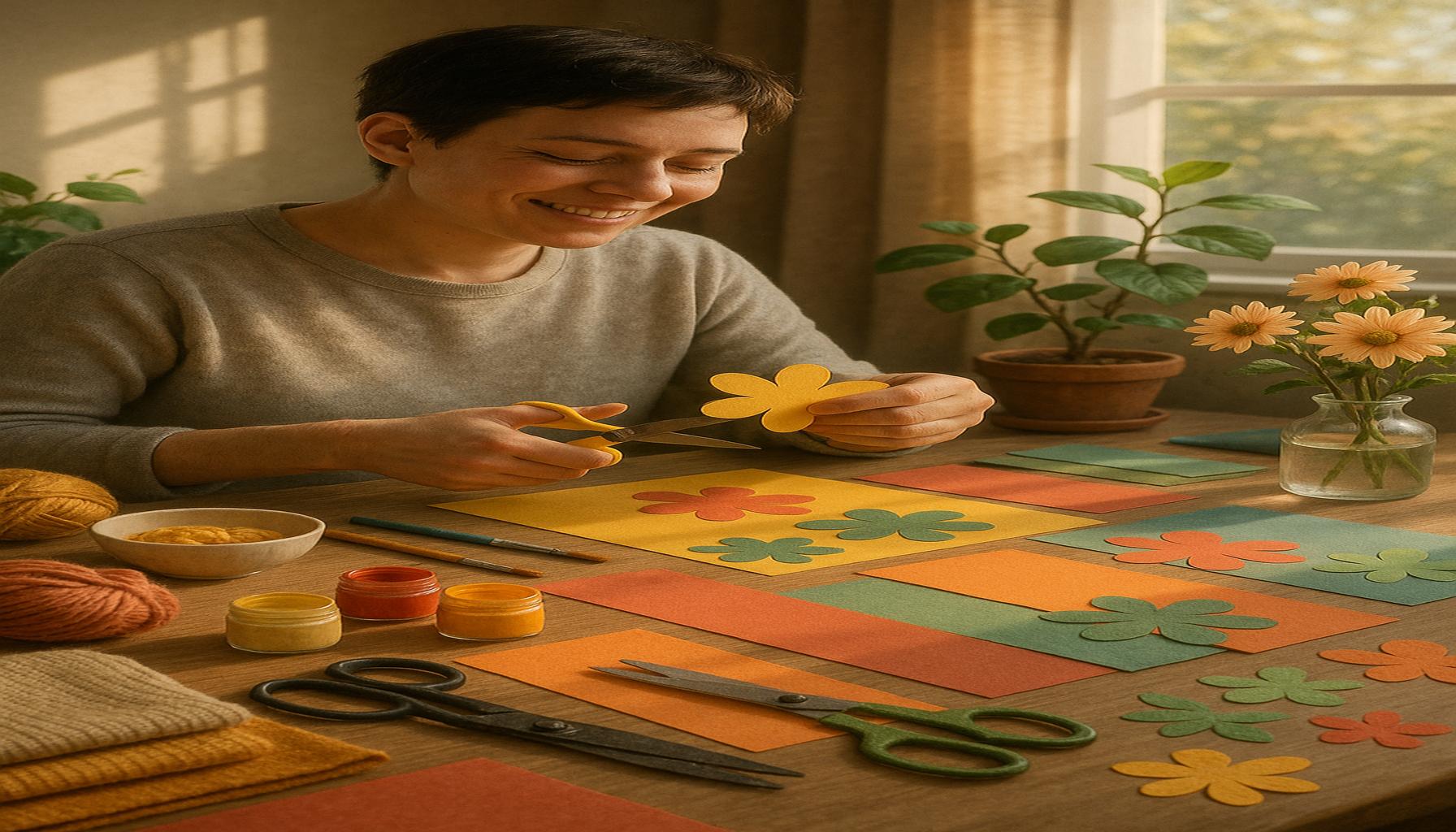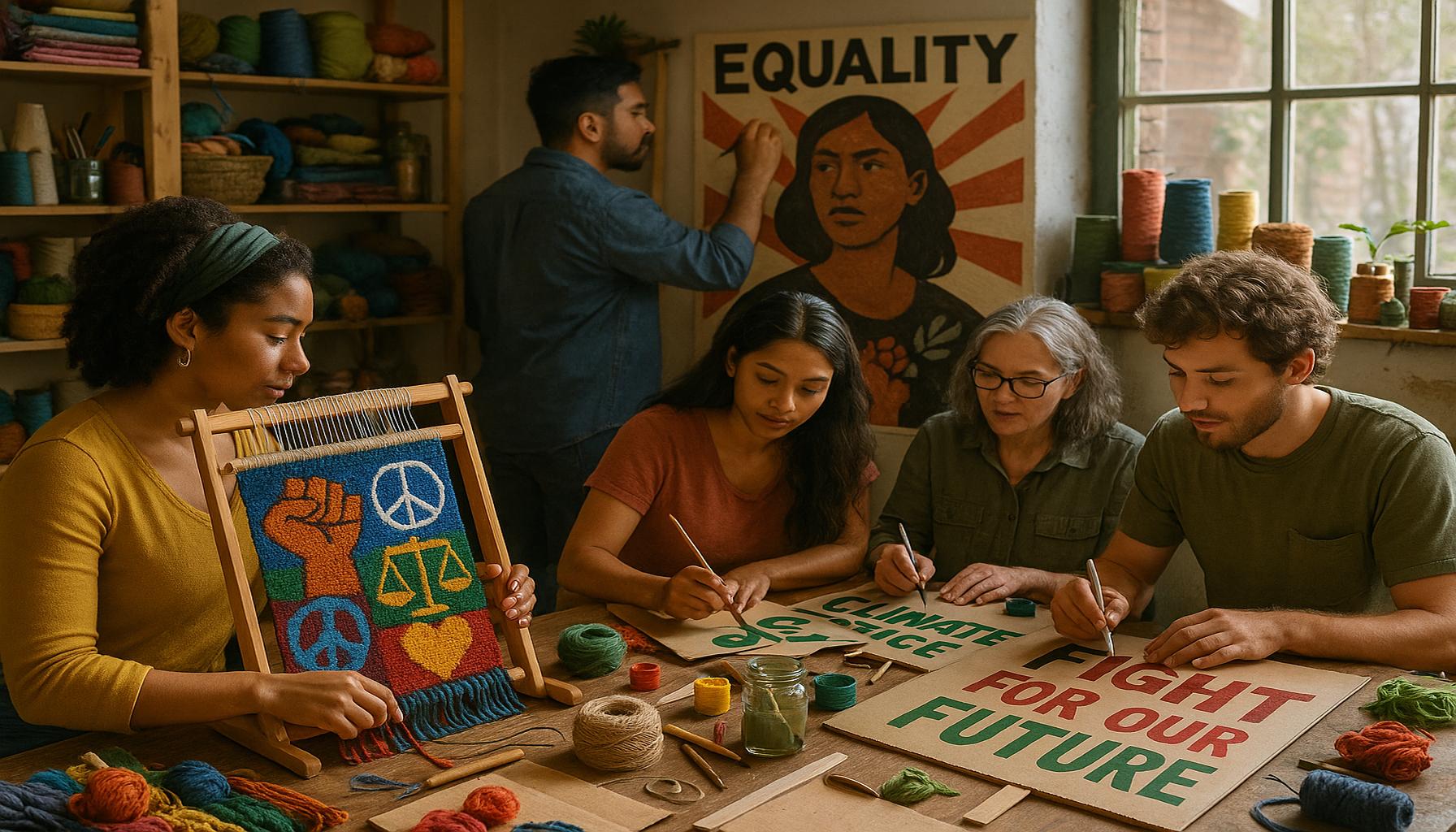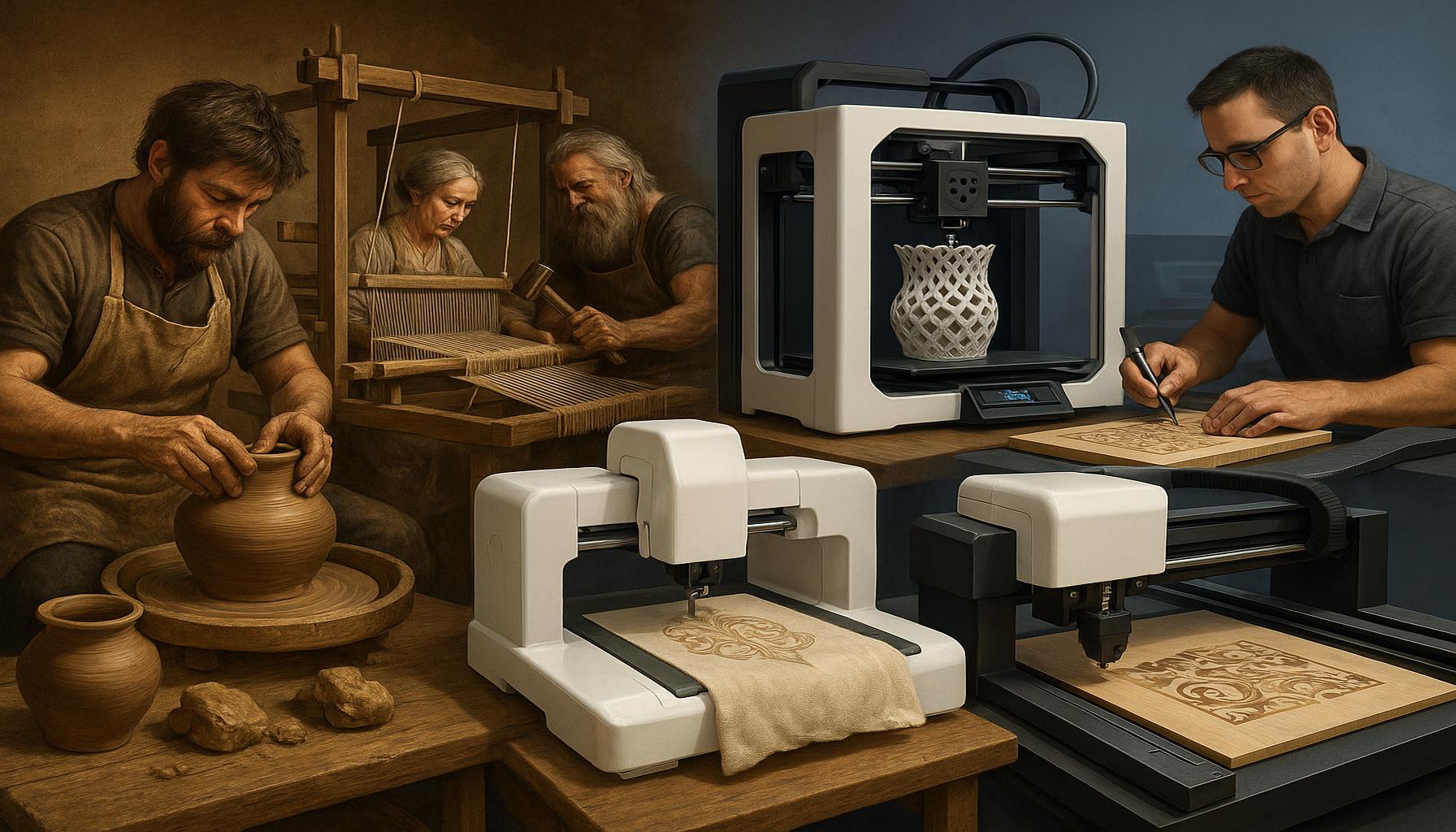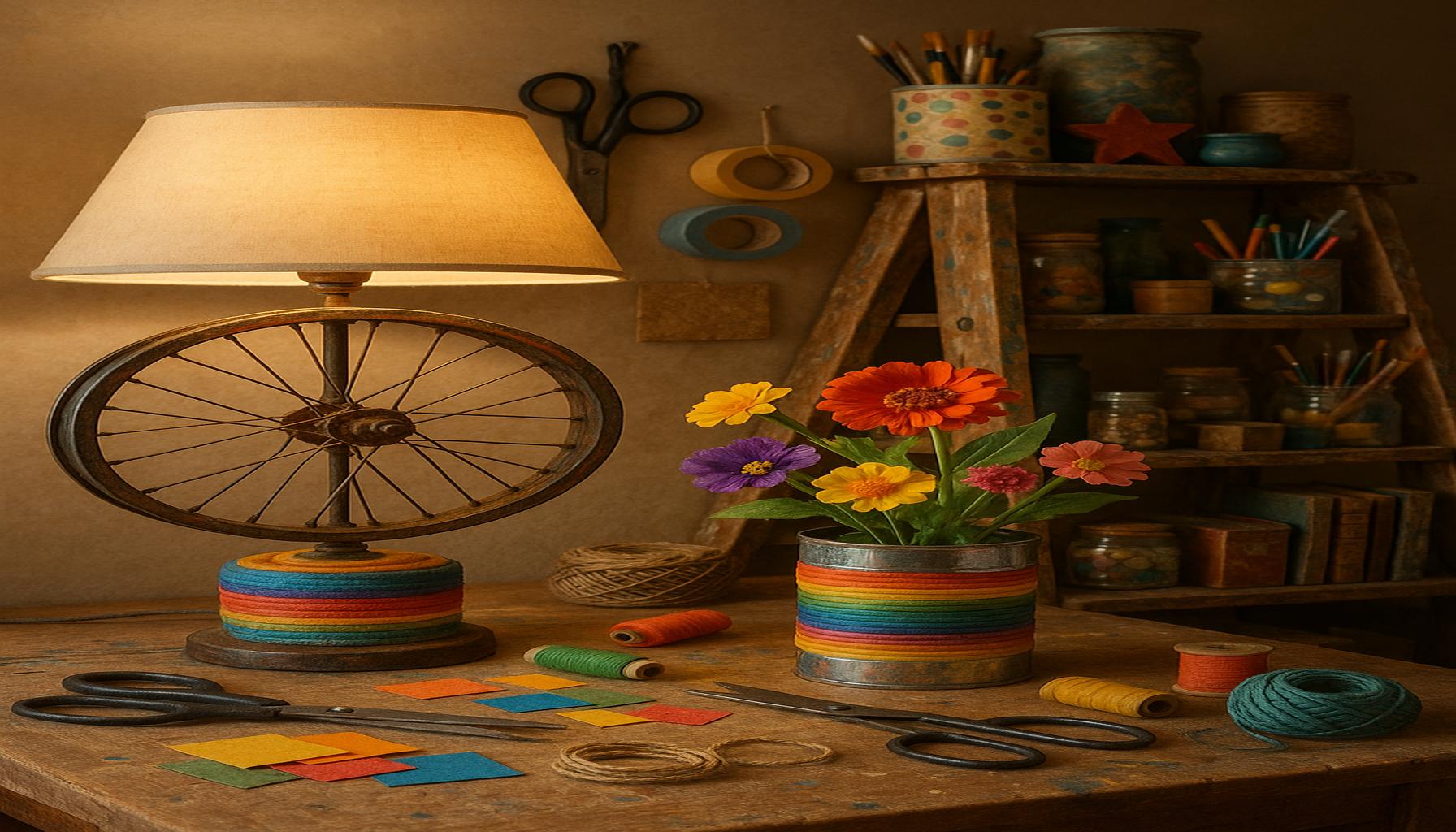The Therapeutic Benefits of Crafting: How Creative Hobbies Improve Mental Health

The Therapeutic Benefits of Crafting
In a world that seems to move at lightning speed, many people are on the lookout for ways to improve their mental and emotional well-being. One of the most effective and enjoyable avenues for achieving this is through creative hobbies, particularly crafting. Engaging in activities like knitting, pottery, or scrapbooking not only serves as a distraction from daily stresses but also imbues a sense of accomplishment that can be hard to achieve otherwise.
According to various studies, the connection between crafting and emotional well-being is backed by science. Activities that involve hands-on creativity can lead to noteworthy emotional benefits. Below are some essential therapeutic advantages of crafting:
- Stress Relief: The repetitive motions involved in crafting activities such as knitting or weaving can induce a state of relaxation. For example, many knitters find that the act of moving yarn through their fingers creates a soothing rhythm that helps to calm racing thoughts.
- Enhanced Mood: Crafting has been linked to increased levels of dopamine, a neurotransmitter that stimulates feelings of pleasure and motivation. Research indicates that creating art or handmade items can be as rewarding as a good workout, making it a multifaceted approach to enhancing one’s mood.
- Improved Focus: Many crafts require a degree of concentration, allowing practitioners to experience a form of mindfulness. Engaging in activities like painting or model building can serve as a meditative escape, providing a focused break from anxiety and daily pressures.
- Social Connection: Engaging in group crafting activities, such as community art classes or craft fairs, fosters bonds among participants. This not only counters feelings of loneliness but also builds a supportive community where individuals can share experiences and feelings, amplifying the sense of belonging.
Additionally, the tangible outcomes of crafting significantly enhance self-esteem. Completing a project—be it a hand-knit scarf or a DIY home decor item—serves as a powerful reminder of one’s creative capabilities. In a society where perfection is often emphasized, the imperfections inherent in handmade items celebrate individuality and creativity.
As we continue to explore various crafting forms, from woodworking to digital art, it becomes increasingly evident how well-rounded and beneficial these activities can be for mental health. Each craft not only offers unique challenges but also provides different paths to self-discovery and emotional regulation. So grab those supplies and dive into a project; the benefits can extend far beyond the canvas, enhancing both your mental well-being and your social circles.
DIVE DEEPER: Click here to learn about sustainability trends
Unpacking the Mental Health Benefits of Crafting
The art of crafting encompasses a vast range of activities that provide not just an outlet for expression but also tangible benefits for mental health. Engaging in creative hobbies has been shown to trigger a cascade of positive emotional responses, making it an important element in wellness routines. To delve deeper, let’s explore how crafting aids mental health and well-being.
One noteworthy advantage of crafting is its ability to promote stress reduction. During the creative process, the brain has a unique way of entering a state of flow—a meditative-like experience. This was highlighted in a 2016 study published in the Journal of Positive Psychology, which found that participants who engaged in crafts reported significantly lower levels of cortisol, the stress hormone, after just 45 minutes of creative work. This suggests that setting aside time for activities like sewing or scrapbooking can provide a much-needed reprieve from the daily grind.
Moreover, crafting activates the brain’s reward system, releasing dopamine and enhancing overall mood. Similar to engaging in physical exercise, completing a crafting project—whether that means finishing a painting or assembling a model—can lead to a burst of happiness. A recent survey conducted by the Craft and Hobby Association revealed that nearly 90% of respondents reported feeling happier after completing craft projects, emphasizing the profound emotional uplift that comes from hands-on creativity.
Mindfulness Through Crafting
Crafting practices encourage a form of mindfulness that is sometimes difficult to achieve in our fast-paced lives. The careful attention required in activities such as pottery or woodwork leads individuals to focus on the present moment. This kind of immersive involvement can act as a distraction from negative thoughts and worries, serving as a mental timeout. Many practitioners describe feeling a sense of peace wash over them while they craft—often referring to their projects as both therapeutic and meditative.
Community is another significant dimension of crafting that cannot be overlooked. By participating in group crafting activities or workshops, individuals not only cultivate their skills but also build social connections. For instance, local craft fairs and community art classes foster environments where people can unite over shared interests. This social aspect is vital as it counters feelings of isolation; many crafters report that the friendships fostered through these events contribute to a renewed sense of belonging and purpose.
Ultimately, crafting provides an abundance of therapeutic benefits that reach beyond the surface. By merging artistry with emotional wellness, individuals find solace in activities that define not only who they are but also how they cope with life’s challenges. Whether it’s knitting a scarf or painting a landscape, the power of creativity serves as a profound reminder of the positive impact these hobbies can have on mental health.
The Therapeutic Benefits of Crafting: How Creative Hobbies Improve Mental Health
As we delve deeper into how crafting contributes to improved mental health, it is essential to understand the multifaceted benefits that creative activities bring. Engaging in artistic pursuits such as knitting, painting, or scrapbooking not only serves as an enjoyable pastime but also acts as a significant therapeutic tool for various mental health conditions.
Research has revealed that participating in creative hobbies can effectively reduce symptoms of anxiety and depression. The act of focusing on a craft project allows individuals to immerse themselves in the present moment, creating a mental escape from stressors and worries. This concept, known as mindfulness, can foster a sense of calm and provide a mental break, akin to the benefits of meditation.
Moreover, crafting enhances self-esteem and encourages personal expression. Completing a project offers a sense of accomplishment, which can be particularly empowering for those struggling with feelings of inadequacy. Creative outlets can also provide a vehicle for emotional expression, allowing individuals to communicate thoughts and feelings that may be difficult to articulate otherwise.
In addition, engaging in craft activities often promotes social interactions. Participating in group crafting sessions or community workshops can facilitate connections with like-minded individuals, combatting loneliness and providing support networks. These communal activities not only boost morale but also contribute to building lasting friendships, further positively influencing mental health.
Studies indicate that regular engagement in crafting can lead to noticeable improvements in overall well-being. The repetitive motions involved in crafting can produce a meditative effect, reducing cortisol levels, which are often elevated during periods of stress. This biochemical reaction reinforces the idea that creative hobbies are not just a fun diversion but integral to achieving emotional balance.
As we explore the profound effects of crafting on mental health, it becomes evident that these hobbies serve as much more than merely a pastime. They offer a holistic approach to enhancing emotional and psychological wellness, making them a valuable resource for anyone seeking to enhance their mental health through creative expression.
| Category | Description |
|---|---|
| Mental Well-Being | Crafting reduces anxiety and fosters mindfulness. |
| Social Connectivity | Group crafting enhances social bonds and combats loneliness. |
Through exploring these relevant categories associated with the therapeutic benefits of crafting, we gain a deeper appreciation for how creativity can significantly enhance mental health outcomes.
DON’T MISS OUT: Click here to discover the healing benefits of writing
The Healing Power of Creativity
In addition to its stress-relieving properties and social engagement, crafting serves as a powerful tool for self-expression, which is integral to mental health. Many individuals struggle to articulate their emotions and thoughts, but creative endeavors often provide the ideal outlet. Artistic mediums like painting, writing, or music allow people to explore and convey their feelings, transforming abstract thoughts into tangible creations. This therapeutic process has been supported by research. A study published in the American Journal of Public Health found that creative activities can lead to an increase in emotional resilience, giving individuals the ability to bounce back from difficult situations with greater ease. By channeling feelings through creativity, individuals can experience a release that promotes emotional healing and clarity.
Crafting as a Coping Mechanism
Crafting has also emerged as a popular coping mechanism for managing mental health issues such as anxiety and depression. Engaging in hands-on projects can take a person’s focus away from their worries, providing a constructive distraction when needed most. The repetitive nature of activities like knitting or embroidery allows for a meditative state, which can significantly reduce anxiety levels. A 2021 study published in The Arts in Psychotherapy found that when participants knitted as a form of therapy, they reported significant decreases in anxiety and depression symptoms. For those struggling with mental health challenges, crafting offers a low-pressure environment to explore and process emotions, paving the way for healing.
Moreover, the sense of accomplishment gained from completing a creative project contributes to a boosted self-esteem. The physical act of creating something—be it a handcrafted item or artistic masterpiece—instills a sense of pride that can be immensely beneficial. This outcome is particularly vital in today’s society, where many grapple with feelings of inadequacy fueled by social media and comparison culture. Crafting turns the focus inward, allowing one to appreciate their unique skills and contributions. The resulting boost in confidence can have a ripple effect, empowering individuals to pursue new challenges in all aspects of their lives.
Therapeutic Workshops and Programs
Recognizing the therapeutic potential of crafting, various organizations across the United States are now incorporating creative hobbies into their mental health programs. These initiatives aim to foster a supportive community where individuals can come together, share their struggles, and find healing through creativity. For example, programs like Art Therapy run by mental health professionals offer structured guidance for individuals seeking solace through artistic expression. Workshops and classes in local community centers aim to provide resources and encouragement for those interested in exploring their creative side. Participants often leave these sessions enriched not only by the skills they gain but also by the valuable connections they foster with fellow crafters.
The intersection of crafting and mental health is becoming increasingly recognized in both therapeutic and social settings. For those searching for effective ways to cope with life’s complexities, the act of creating stands out as an accessible, enjoyable, and impactful solution. With varying forms of crafting available—from painting and pottery to woodworking and knitting—individuals can explore what resonates with them personally, making the journey toward improved mental health both fulfilling and engaging.
DIVE DEEPER: Click here to uncover the flavors of ethnic cuisine
Embracing Creativity for Mental Wellness
In conclusion, the transformative power of crafting as a means to enhance mental health cannot be overstated. From offering a unique avenue for self-expression to providing a fulfilling distraction from daily stressors, creative hobbies have solidified their place in therapeutic practices. The repetitive motions involved in activities such as knitting or painting not only induce a calming, meditative state but also play a fundamental role in alleviating symptoms of anxiety and depression. Moreover, crafting fosters a sense of community, connecting individuals in meaningful ways that enrich their emotional well-being.
The rise of structured creative workshops and programs further underscores the recognition of crafting as an effective mental health strategy. These initiatives not only empower individuals to explore new artistic avenues but also facilitate social connections that can combat feelings of isolation. As more research supports the mental health benefits associated with creative hobbies, the call to integrate crafting into our daily lives becomes increasingly compelling.
Ultimately, embracing creativity through crafting serves as a practical, enjoyable method for individuals seeking to improve their mental health. It encourages us to turn inward, accept our unique talents, and experience the pride that comes from creating something tangible. As you consider ways to enhance your own mental wellness, reflecting on how crafting could fit into your life may open doors to a richer, more fulfilling journey toward emotional serenity and resilience.


